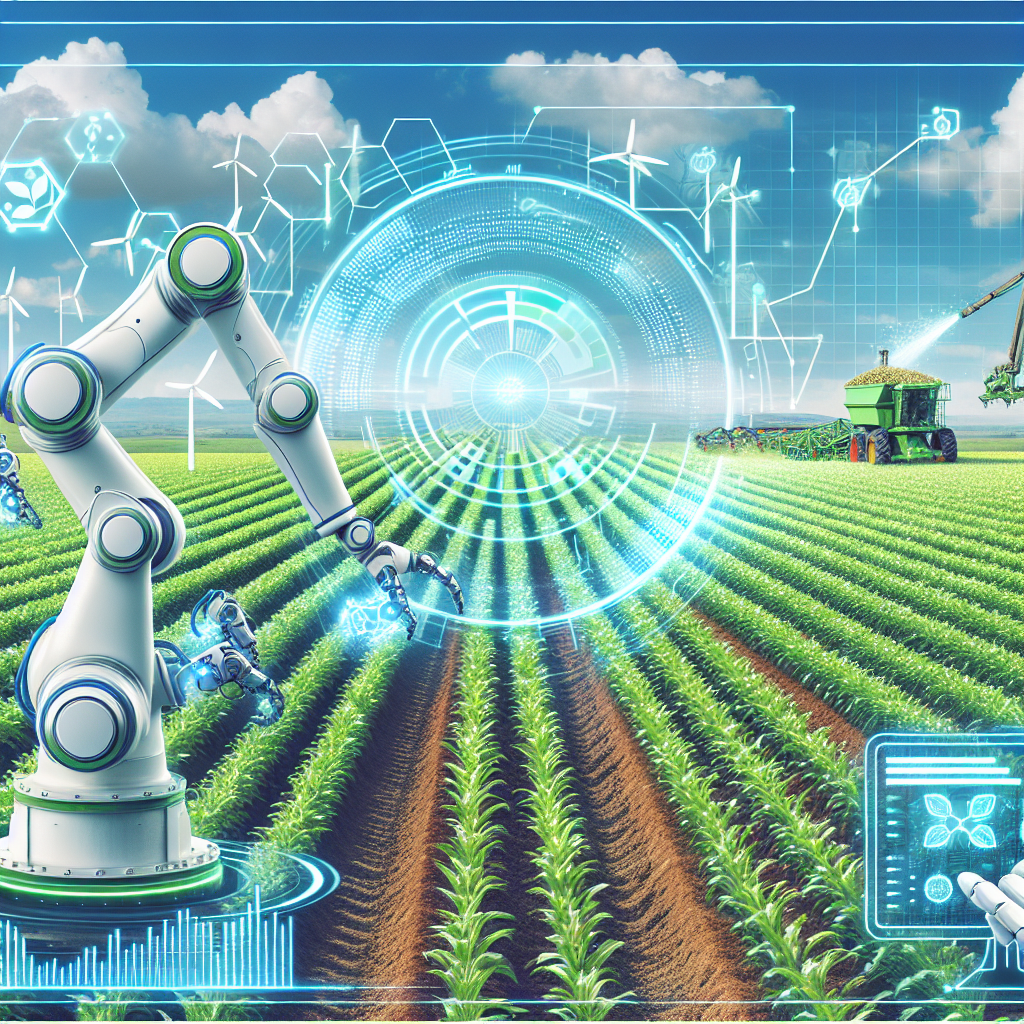The Future of AI in Agricultural Cooperatives
In recent years, the use of artificial intelligence (AI) in agriculture has been gaining momentum. From precision farming to crop monitoring, AI technologies have the potential to revolutionize the way agricultural cooperatives operate. By harnessing the power of data and machine learning algorithms, agricultural cooperatives can improve efficiency, increase productivity, and reduce costs. In this article, we will explore the potential applications of AI in agricultural cooperatives and discuss the benefits and challenges of implementing these technologies.
Applications of AI in Agricultural Cooperatives
There are several ways in which AI can be used to enhance the operations of agricultural cooperatives. Some of the key applications include:
1. Precision Farming: AI can be used to analyze data from sensors, drones, and satellite imagery to create detailed maps of farms. This information can then be used to optimize planting, irrigation, and fertilization practices, leading to higher yields and reduced input costs.
2. Crop Monitoring: AI-powered drones and robots can be used to monitor crops for signs of pests, diseases, and nutrient deficiencies. By detecting problems early, farmers can take corrective action before they escalate, reducing crop losses and increasing profitability.
3. Harvesting and Sorting: AI-powered robots can be used to harvest crops and sort them based on size, color, and quality. This automation can significantly reduce labor costs and improve efficiency in the post-harvest process.
4. Predictive Analytics: AI algorithms can analyze historical data on weather patterns, crop yields, and market prices to predict future trends and make informed decisions. By leveraging this information, agricultural cooperatives can better plan their operations and maximize profitability.
Benefits of AI in Agricultural Cooperatives
The adoption of AI technologies in agricultural cooperatives offers several benefits, including:
1. Increased Efficiency: AI-powered systems can perform tasks faster and more accurately than humans, leading to increased efficiency in farm operations.
2. Improved Decision-Making: By providing real-time insights and predictive analytics, AI can help agricultural cooperatives make informed decisions that drive profitability and sustainability.
3. Cost Savings: AI technologies can reduce labor costs, increase yields, and optimize resource usage, leading to overall cost savings for agricultural cooperatives.
4. Sustainability: AI can help agricultural cooperatives implement sustainable practices by minimizing the use of chemicals, water, and energy, and reducing environmental impact.
Challenges of Implementing AI in Agricultural Cooperatives
While the benefits of AI in agriculture are clear, there are several challenges that agricultural cooperatives may face when implementing these technologies, including:
1. Data Quality and Availability: AI algorithms require large amounts of high-quality data to function effectively. Agricultural cooperatives may struggle to collect, clean, and analyze the necessary data for AI applications.
2. Infrastructure and Connectivity: AI technologies require reliable internet connectivity and access to advanced computing resources. In rural areas where agricultural cooperatives are often located, infrastructure constraints may limit the implementation of AI solutions.
3. Skills and Training: Agricultural cooperatives may lack the technical expertise and training needed to deploy and maintain AI systems. Investing in training programs and hiring skilled personnel can be costly and time-consuming.
4. Regulatory and Ethical Considerations: AI technologies raise concerns about data privacy, security, and bias. Agricultural cooperatives must navigate regulatory frameworks and ethical guidelines to ensure the responsible use of AI in their operations.
FAQs
Q: How can AI help agricultural cooperatives increase crop yields?
A: AI can analyze data from sensors, drones, and satellite imagery to optimize planting, irrigation, and fertilization practices, leading to higher yields.
Q: What are some examples of AI applications in precision farming?
A: Some examples of AI applications in precision farming include automated soil testing, variable rate seeding, and autonomous tractors.
Q: How can AI help agricultural cooperatives reduce input costs?
A: By providing real-time insights and predictive analytics, AI can help agricultural cooperatives optimize resource usage and minimize input costs.
Q: What are the key challenges of implementing AI in agricultural cooperatives?
A: Some of the key challenges include data quality and availability, infrastructure and connectivity issues, skills and training requirements, and regulatory and ethical considerations.
In conclusion, the future of AI in agricultural cooperatives holds tremendous potential to revolutionize the way food is produced and distributed. By leveraging the power of data and machine learning algorithms, agricultural cooperatives can improve efficiency, increase productivity, and reduce costs. While there are challenges to overcome, the benefits of implementing AI technologies in agriculture are clear. With the right strategy and investment, agricultural cooperatives can harness the full potential of AI to create a more sustainable and prosperous future for the industry.

